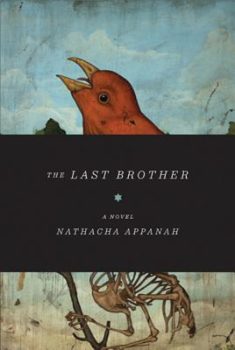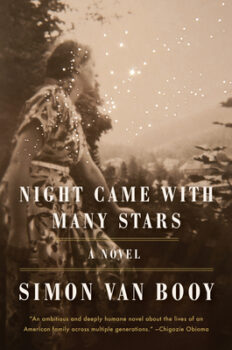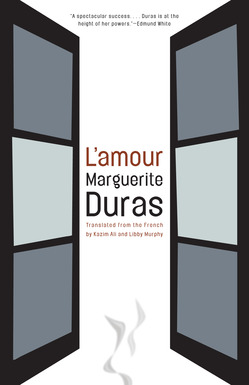
A Marguerite Duras novel in its first English translation: just another publication, or an event? This summer, Open Letter Books publishes L’Amour, which stands at the heart of Duras’ celebrated India cycle. Duras adapted L’Amour—first published in French in 1971—into a film entitled La Femme du Gange (Woman of the Ganges) in 1974, and it was the last novel she wrote before taking a long hiatus from fiction, eventually publishing L’Amant (The Lover) more than a decade later, in 1984.
Less a straightforward narrative than a haunting and cyclical assemblage of prose poetry, dialogue, and terse prose passages, L’Amour teases at the story of “he” and “she.” “He” is returning to the town of S. Thala (a quiet, restive place, evocations of which suggest long empty stretches of sandy beaches alongside an offseason vacation town) in order to free himself from his present life (a wife, children, work) but finds himself instead reconnoitering with his past. “She” may or may not be the same woman; “she” may be one, or two, or three different people. Events and characters offer reflections of a range of passages of life—and rites of passage—in the novel: pregnancy, birth, childhood, young adulthood, young love, aging, disappointment, suicide, old age, and death. L’Amour is a novel you less read than swim through; you might be reading words on the pages from left to right, top to bottom, but even the formatting of the text lends the sense that you are drifting, and being pulled along with the characters and their experiences.
When I first received the advanced reader’s copy of L’Amour, I was struck, first, by the elegant cover design and wonderful feel of both its jacket and pages. The second thing I noticed was that L’Amour had two translators. What must it have been like, sharing this work? In my experience, translation is an intimate act, a coupling with the author of the original text. It becomes an act of embodiment, and at times, a possession of sorts. Think about getting into your character’s mind as you write, the way that you channel what they see and experience. And then imagine that you are writing from your character’s perspective not only as he or she writes, but that, in fact, you are forming the sentences on the page or screen with that character, transmitting their experience of writing to your reader through the written words themselves via an imperfect yet often sublime exchange of languages—not just what the words say or mean, but how they sound and feel and the emotions, images, and memories they evoke, whether directly and indirectly. It’s a mindbender, translation work, a thrilling one.
So I was delighted to have the chance to pick the brains of L’Amour’s co-translators, Kazim Ali and Libby Murphy, in anticipation of Open Letter‘s July release of this book. Both are professors at Oberlin College—Ali as a fiction writer and poet who teaches creative writing, Murphy as a scholar of twentieth-century French literature. We conducted the interview via email, and their responses to my questions, as you will see, make for a scrumptious and scintillating read in and of themselves.
Interview:
Jennifer Solheim: Although we’re conducting this interview via email, I’d like to set a more vivid scene for our readers. So what would be the ideal spot for the three of us to sit down and talk about your translation of Marguerite Duras’ L’Amour?
Kazim Ali (KA): It could be at my house in Oberlin. It’s a beautiful place, built in 1911, that I had just moved into in the Summer of 2009 when Libby and I had just finished our first draft of the translation and were meeting together to go over and correct it. We also met there with Janice Zinser, a retired professor from the college and a Duras scholar, who read our draft and talked to us about it.
With Janice we met on a screened porch off our kitchen and then Libby and I did most of our work at a picnic table on the patio. My partner Marco has converted most of the back yard into vegetable plots, and there would be hummingbirds and bees of various kinds buzzing around doing their business while we did ours.
In your beautiful introduction, Kazim, you write, “L’Amour, never before translated into English, is at the heart of a constellation of texts, both verbal and visual, by Marguerite Duras, sometimes called the India Cycle.” So what is the story behind the translation of L’Amour? Why now? Did you approach Open Letter Books, or did they approach you? Why hasn’t it been translated previously?
KA: I was a Duras lover, very enamored of her prose style, which seemed even more powerful in her middle-period (1965 – 1984, roughly) when she started recycling plots throughout her books. I happened upon L’Amour in a Paris bookstore and found it immediately charming and powerful—in fact, kind of a classic example of this spare disembodied style that she was cultivating. It almost reads like a treatment for a film, so it makes complete sense to me that after writing this book she more or less abandoned fiction for film. During the thirteen years that followed she did write four short prose narratives—the most well known of these is The Malady of Death—but essentially did not write another novel until The Lover.
 I can’t say why no one had attempted a translation yet. It is a very experimental prose style and a very experimental novel in that not much really happens. Yet it has been written about by countless critics, all of whom were doing their own translations of the small excerpts they wished to discuss. I had approached a couple of different publishers, but this is a quirky book, even for Duras, who is quirky all on her own. Open Letter was very excited and enthusiastic about the book. They are doing a wonderful job and are devoted completely to literature in translation. They have another Duras book in their catalog (The Sailor from Gibraltar) and signed us up almost immediately.
I can’t say why no one had attempted a translation yet. It is a very experimental prose style and a very experimental novel in that not much really happens. Yet it has been written about by countless critics, all of whom were doing their own translations of the small excerpts they wished to discuss. I had approached a couple of different publishers, but this is a quirky book, even for Duras, who is quirky all on her own. Open Letter was very excited and enthusiastic about the book. They are doing a wonderful job and are devoted completely to literature in translation. They have another Duras book in their catalog (The Sailor from Gibraltar) and signed us up almost immediately.
Since L’Amour is a centerpiece of the India Cycle, did the English translations of the other works in the cycle inform you? Were there stylistic or other elements in the translations that you decided you wanted to preserve or eschew?
KA: During the translation process I read every other translation I could find. Duras does sound a certain way in English through the excellent work of Barbara Bray. The few other Duras translations that exist have a different sense. Bray did an odd thing, which is that she did not “Anglicize” the syntax very much, so the sentences still have that sometimes ornate overdone word order of a French sentence. In L’Amour Duras writes very simply, very plainly. So I found an inspiration in Gertrude Stein’s English. But unlike Stein, Duras is in love with the comma—her sentences can just keep going and going. So it took a draft or two to get the hang of the rhythme du sens, so to speak. Which—eventually—seemed really important and related to the constant sound of waves that permeates life at the ocean; meaning the sentence structure and grammar was part of the meaning—it couldn’t be changed.
Did the films or Duras’ film scripts influence your translation?
KA: Yes. I found the films she made in the same time period (Nathalie Granger, La Femme du Gange) to be of particular help in terms of the strange and quiet atmosphere. La Femme du Gange was Duras’ own film adaptation of L’Amour. There were certain plot elements of L’Amour that were cleared up or made more specific by the film script, for example the identity of the woman who shows up at the hotel midway through the book with her children in tow.
What is it like to work on the translation of one of France’s literary giants who is also widely translated and appreciated in the Anglophone world?
Libby Murphy (LM): To be honest, it wasn’t something I thought about much at the time. If I had, I think I would have felt completely inhibited and overwhelmed. I am not a Duras specialist. I was coming to Duras from the point of view of a teacher of 19th and 20th century French literature. I had read Duras, of course—she’s absolutely incontournable [“indispensible”] for 20th century French lit—but I had never read her work in translation. I didn’t realize—although I should have—how widely she is read in the Anglophone world. That was part of the joy of this whole process for me. Working with Kazim reminded me of the wider contexts and communities, disciplinary and otherwise, in which Duras and other French and Francophone authors are read and appreciated. It was refreshing to put Duras in a global literary perspective. This is where French Studies, as a field in transition, is heading, and it is exciting to be a part of that shift in thinking.
KA: Duras has a distinctive voice in English—for me, it’s from Barbara Bray’s wonderful translations. There are many other Duras translators and there are also many other “Durases,” since her style underwent several transformations throughout her writing life. In fact, L’Amour itself marks one of those great transformations in style. It was wonderful to inhabit that weird moment, somehow appropriately taking place in a mostly vacant beach-town (off-season?), itself a liminal and transformative space. Duras was fond of places like that—hotels, resorts, bars, restaurants, where people were sort of “homeless,” in public and neutral space.
How did you collaborate on the translation?
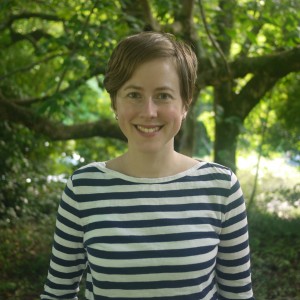 LM: We went through many, many, many drafts. We began by dividing the text into two parts and working independently for a while. That gave us each a chance to become fully immersed in the text, to feel its rhythms, to hear its voice, to situate ourselves in the strange ebb and flow of the plot, if you want to call it a plot. Then we brought the two halves together and began a process that in retrospect seems a little like the swirling and churning of the water in L’Amour, at that place where the river meets the sea. Once we had a first draft, we asked Janice Zinser, who is both a translator and a great reader of Duras, to look at it. She gave us invaluable, detailed feedback that set us up well for the revision process ahead. We then worked over the translation multiple times, sending drafts back and forth over email, meeting at Kazim’s house, talking by Skype when we were on opposite sides of the country. It was not a linear process, but this is not a linear text. Plus, there were so many little rough patches that needed to be ironed out, so many details and relationships that remained unclear for so long and that seemed to shift about with every fresh reading. I think we were both very cautious about rushing to judgment or imposing clarity where the text seemed deliberately obscure. We treated every word with respect (and more than a little suspicion). The stylistic sparseness of this text conceals an astonishing depth and complexity of meaning. That richness through minimalism is, for me, the great wonder of L’Amour. I’m glad we were patient and gave that complexity time to mature.
LM: We went through many, many, many drafts. We began by dividing the text into two parts and working independently for a while. That gave us each a chance to become fully immersed in the text, to feel its rhythms, to hear its voice, to situate ourselves in the strange ebb and flow of the plot, if you want to call it a plot. Then we brought the two halves together and began a process that in retrospect seems a little like the swirling and churning of the water in L’Amour, at that place where the river meets the sea. Once we had a first draft, we asked Janice Zinser, who is both a translator and a great reader of Duras, to look at it. She gave us invaluable, detailed feedback that set us up well for the revision process ahead. We then worked over the translation multiple times, sending drafts back and forth over email, meeting at Kazim’s house, talking by Skype when we were on opposite sides of the country. It was not a linear process, but this is not a linear text. Plus, there were so many little rough patches that needed to be ironed out, so many details and relationships that remained unclear for so long and that seemed to shift about with every fresh reading. I think we were both very cautious about rushing to judgment or imposing clarity where the text seemed deliberately obscure. We treated every word with respect (and more than a little suspicion). The stylistic sparseness of this text conceals an astonishing depth and complexity of meaning. That richness through minimalism is, for me, the great wonder of L’Amour. I’m glad we were patient and gave that complexity time to mature.
KA: And because Duras is using a limited palette of both image and description we often had to comb through the text to ensure we were translating repeated images and phrases the same way throughout—in order for the repetition to actually be repetitious!
Could you relate an anecdote or two when you had a disagreement over how something should be translated, and how you resolved it?
LM: I can’t think of any examples of what I’d call disagreements. There were just lots of open-ended questions, questions that it was a pleasure (and relief) to work through with a partner. There was a real gentleness to this process that was inspired, I think, by the text itself. The text gives you no firm ground—semantic, syntactic, epistemological, metaphysical, or otherwise—to dig your heels into. It’s very humbling for the translator. The only reasonable stance to adopt with L’Amour, I think, is one of complete openness. When there were major questions to work through, we just went back and forth with it as long as it took to reach some sort of understanding of the text that we were both comfortable with.
One such issue was how to translate the French indefinite personal pronoun “on,” which can be translated in a number of different ways, depending upon the context. L’Amour holds the reader at a certain distance—giving no character names and no clear or stable spatial or temporal markers. So when you read a sentence like “On ne voit rien,” you have a choice between “one sees nothing” or even the passive “nothing is seen”—which is consistent with other uses of the passive voice in the text—or the slightly more intimate “you see nothing.” In many other translation contexts, this “one” vs. “you” distinction would not seem so weighty. But there is so much watching and seeing going on in this text—the characters watch each other, they watch the people of the town, they watch the changes in the sea and the sky, they watch things out of open windows and doors. But who is watching them? The other people in the town? The eye of God—the God of “God, that thing…”? The reader? In the end, Kazim offered up the idea of a “cinematic you,” a “you” that invites the reader into the fictional world, but only so far. In L’Amour this “cinematic you” establishes between narrator and reader a relationship like that between screenwriter and director or between director and spectator. It acknowledges the voyeuristic eye of the reader/spectator, but positions that eye at an appropriately non-affective distance from the characters and the action. With this idea of the “cinematic you” in place, we were able to go back through the text and make a number of little decisions, not all of them directly related to the translation of “on,” that had been left unresolved. So, we didn’t have disagreements per se, but different ways of reading and understanding the text. And these differences were very productive.
KA: What was interesting to me was that Libby’s command of French is more advanced than mine and because of that I often would want to stick closer to Duras’ phrasing or construction, whereas Libby felt bolder and more confident about moving farther afield in interpretation. There were some phrases where they read so perfectly in French you really just want to leave them there, including, I would say, the last seven or eight lines of the book. We must have gone over them in ten different versions throughout the whole process.
To Kazim’s introduction again: you write about how the text is rich with verbs of movement, “verbs that only French can provide.” How did you both decide to translate these verbs? Could you talk about the decision to not “over-Anglicize syntax”? An example would be great for readers who might not read French.
LM: There are some verbs of movement, like walking, running, or hurrying somewhere, that are more clunky to express in French than in English. I think French in general is more tolerant of ambiguity in expressions of motion than English is. In English, the means and kind of movement, the spatial direction of the movement, and the way the movement is performed all tend to be expressed and prioritized, often by the verb itself, whereas in French they are not necessarily. All of those movements I just mentioned—walking, running, hurrying somewhere—could be anchored in French to the same simple verb—aller. Duras uses lots of economical verbs of movement, such as aller, venir, revenir, passer, and repasser—verbs that in journalistic French would require lots of add-ons to express a really precise sense of direction, manner, and intention, but that, in more literary contexts, can also stand alone syntactically or be paired with very short prepositional phrases. By paring those verbs of motion down to their most economical expression, Duras exploits the French language’s tolerance for ambiguity in expressions of movement, describing motions that are both precise—at least within French demands of precision when it comes to movement—and spectral and elusive.
She also makes extensive use of reflexive verbs of motion like se diriger vers (to make one’s way towards) or s’éloigner de (to move away from) that are clunky and cumbersome when translated into English. These reflexive verbs lose both their economy and their poetic potential when translated. You lose the alliteration, the symmetry, and the rapidity of expression. To make up for this, we played around with suppressing subject pronouns in places where Duras had repeated them, so that our sentences would retain some of the briskness of the originals. Or, where the alliteration of reflexive pronouns had been lost, we would privilege verb choices in English that would put alliteration, repetition, or symmetry back into the sentence. Of course, Duras also uses nouns to express motion. As you can imagine, we had many, many “pas” or “footsteps” to translate in this text, and, as with the verbs of motion, each one communicated, in an incredibly economical fashion, a history, a state of mind, a direction, or a lack of direction. The challenge was to come up with syntax that was acceptable in English without weighing down the sentence or filling in all the blanks that English would normally fill in.
Thanks so much to you both. On a final note for our primarily fiction-writer audience, Kazim, why don’t you talk about some differences between working on a translation and writing your own fiction?
KA: Duras is a writer I admire and love and so it felt a little intimate to be working inside her voice—to be Duras, if you like. It can be difficult to come up against edges in the book you want to rewrite, and not just superficially. Also this book occupies a transitional space between Lol V. Stein (and Destroy, She Said, I think) and later Duras works, both the film India Song and the texts Malady of Death and The Atlantic Man and others. All Duras books are prequels and sequels to one another in a way, but it was great to jump into this unknown and untranslated space and start to see all the connections finally being made. When you are writing your own fiction you are constantly preoccupied with space and time and unfolding plot; when translating you can really lose yourself in language and rhythm. There’s no greater pleasure for a poet, of course.
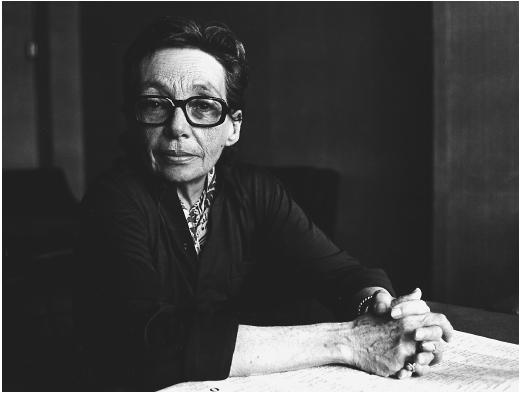
Links & Resources:
- Visit the website for Open Letter Books, publisher of new translations of Duras’ L’Amour and The Sailor from Gilbraltar (tr. Barbara Bray).
- Check out the Duras film based on L’Amour, Woman of the Ganges.
- You can also visit Kazim Ali’s website.
- And here is Marguerite Duras’ Good Reads page.


